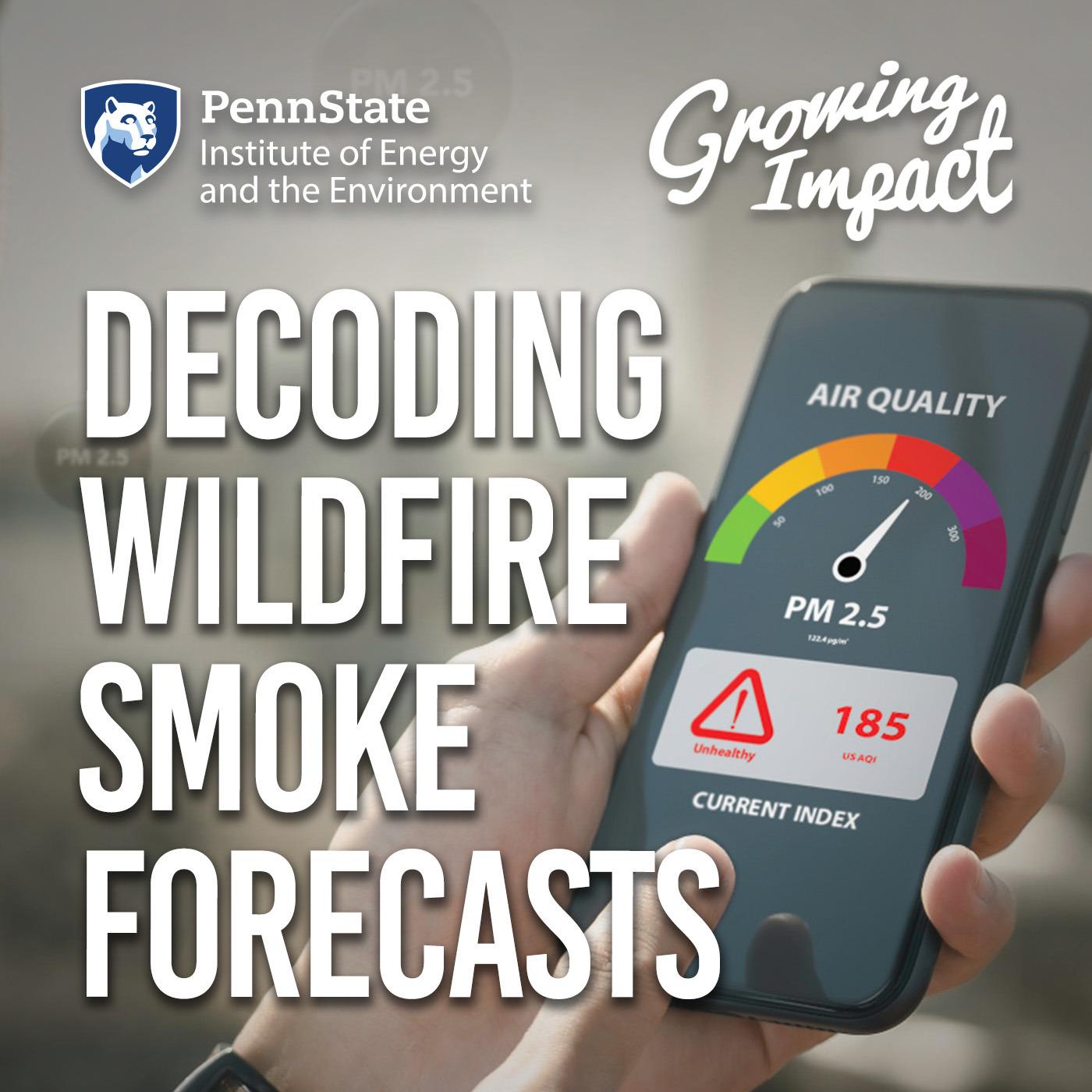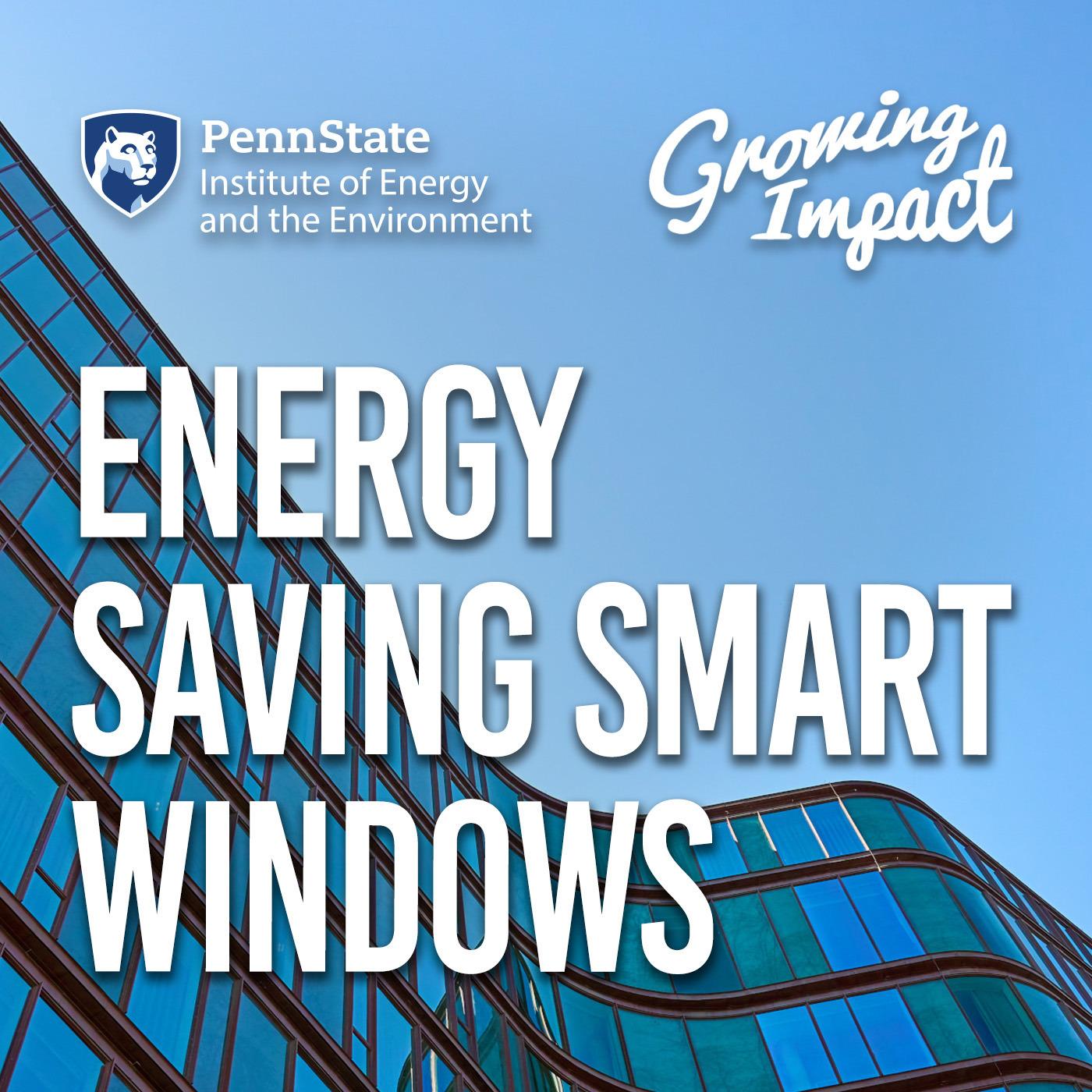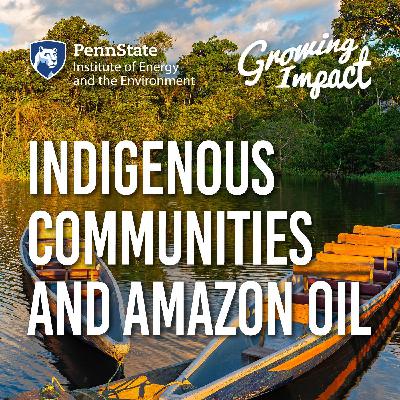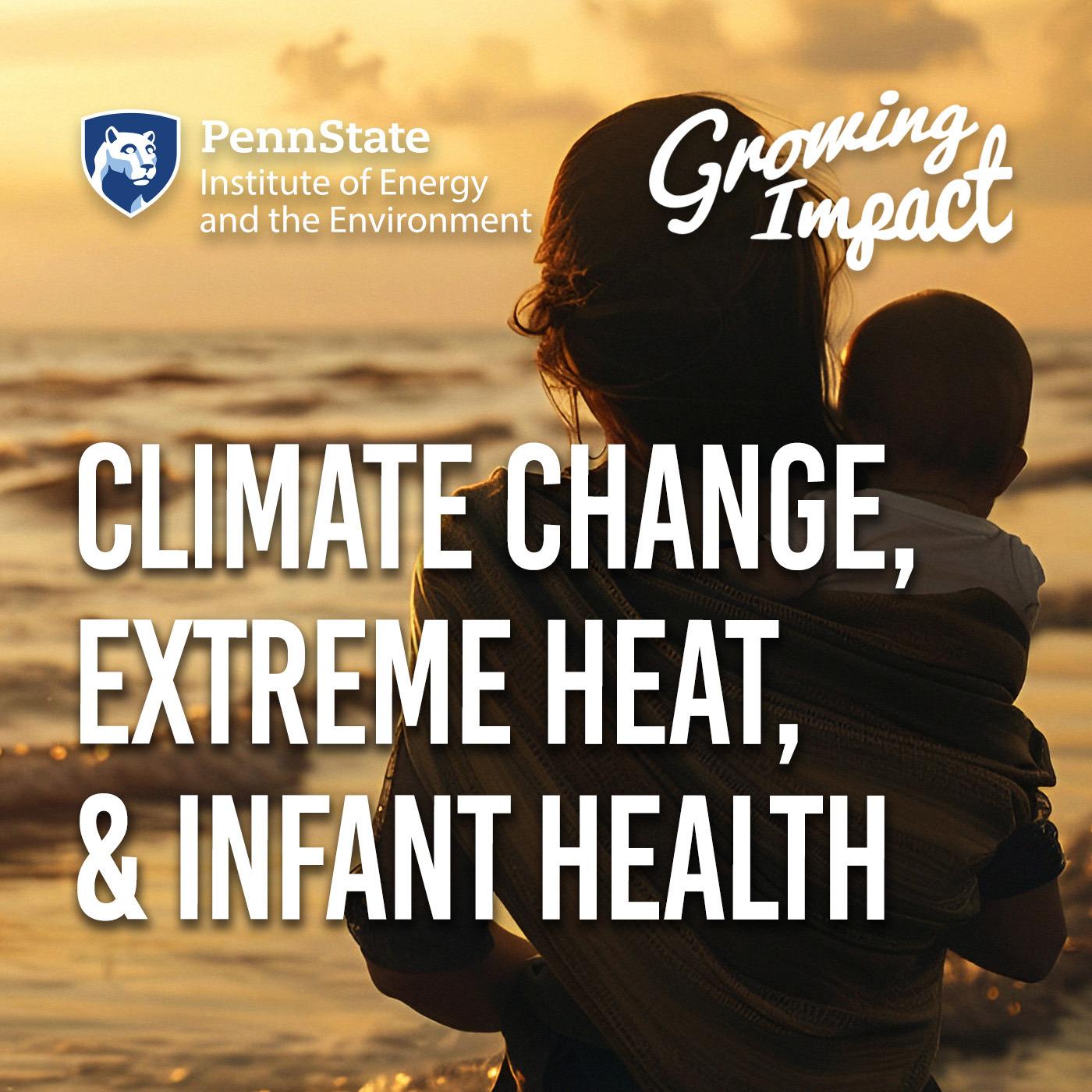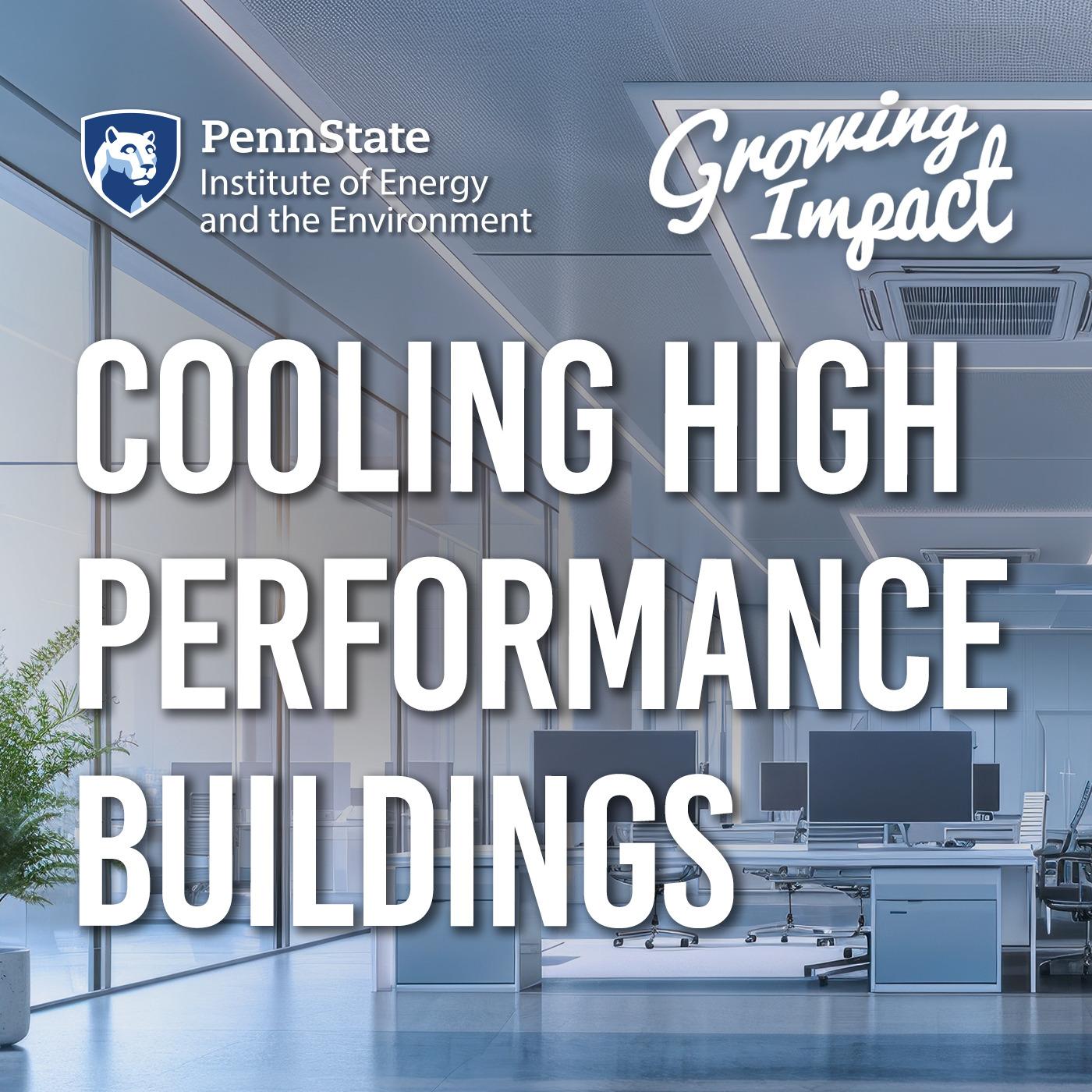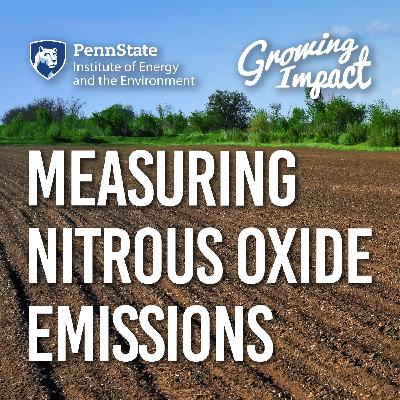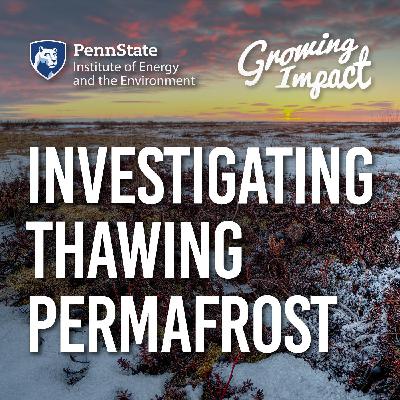Discover Growing Impact
Growing Impact

Growing Impact
Author: Penn State Institute of Energy and the Environment
Subscribed: 2Played: 49Subscribe
Share
© Copyright 2025 Growing Impact
Description
Growing Impact explores cutting-edge projects of Penn State researchers and scientists who are solving some of the world's most challenging energy and environmental issues.
55 Episodes
Reverse
Long-distance wildfire smoke is emerging as a serious health risk in the Northeast U.S., where many residents have little experience navigating hazardous air. Conflicting messages from apps, agencies, media, and social networks often leave people unsure what to trust or how to respond. Researchers are uncovering how people interpret these warnings, why uncertainty slows protective action, and what clearer, more reliable communication could do to better protect communities during future smoke events.
How do you keep a building comfortable without wasting energy? A Penn State team is tackling that question with an innovative smart window. Using a responsive polymer, the window can block visible light, infrared heat, or both—automatically, without sensors or electricity. The technology could dramatically reduce energy use in buildings while giving architects new freedom to design spaces that work with, rather than against, the sun.
The Amazon, home to rich biodiversity and vital carbon-storing ecosystems, is also the ancestral land of Indigenous communities who are grappling with the devastating effects of oil extraction across Ecuador, Peru, and Colombia. These communities live amid widespread pollution from oil spills, toxic chemicals, and industrial infrastructure, which threaten their way of life and the health of their environment. In response, they are working alongside researchers to map the environmental destruction and strengthen their efforts to hold oil companies accountable while fighting to protect their lands and preserve their cultural heritage.
Heat significantly affects pregnant women and infants, increasing risks like dehydration, heat exhaustion, and developmental issues in children. Expectant mothers are more vulnerable due to physiological changes, while infants face heightened danger because of immature temperature regulation. These challenges are further intensified for families with limited resources. Researchers are investigating these impacts to provide lawmakers with the knowledge needed to create protective measures for these at-risk groups.
Cooling is energy-intensive, with air conditioning consuming a significant portion of electricity in homes and commercial buildings, while also contributing to greenhouse gas emissions and climate change. This creates a cycle of increasing energy demand for cooling. However, innovative materials that cool when strained offer a promising, sustainable solution for various applications.
Nitrous oxide is a potent greenhouse gas with nearly 300 times the warming potential of carbon dioxide, making even small emissions highly impactful. Agriculture, particularly soil management, is the largest source of nitrous oxide. To better understand and manage these emissions, researchers have developed a system for continuous monitoring on farms and other land management purposes.
PFAS, synthetic chemicals found in countless everyday products, have made their way into humans and animals around the globe. Although their health effects remain unclear, their widespread presence raises important questions. Scientists are now investigating whether these chemicals might disrupt the human gut microbiome, potentially impacting our health in unexpected ways.
The Earth can shift suddenly, with sinkholes and landslides posing serious risks to people and property. Scientists are now using existing fiber optic cables in cities to detect potential geohazards before they strike. This innovative approach is expanding to monitor flooding and even track human movement, unlocking new possibilities for data collection and understanding our world.
Cement, a major component of concrete, is a significant contributor to global carbon emissions. Researchers are exploring agricultural waste as a potential alternative to cement, aiming to reduce carbon footprint while also finding new uses for farm byproducts. However, the feasibility and effectiveness of this solution depend on the collaboration between researchers and farming communities.
Smallholder farmers are the unsung heroes of our food system. Tilling tiny plots, they produce a staggering one-third of the world’s food and up to 80% of the food supply in regions like sub-Saharan Africa and Asia. But these vital contributors face immense challenges: such as climate change, pests, insufficient finances, and limited education and training. On this episode of Growing Impact, we’re revisiting the story of PlantVillage, a project funded as a seed grant by IEE in 2016. Its aim was to empower smallholder farmers with knowledge through smartphones and machine learning. Since its creation, PlantVillage has gained strong support from organizations worldwide and has built a robust team of partners and collaborators. Looking ahead, PlantVillage plans to expand how it’s helping farmers while simultaneously addressing climate change.
Flooding is the world's most devastating natural disaster, causing widespread destruction and loss of life. Millions of Americans live in high-risk flood zones, with the threat amplified by climate change and aging infrastructure. This episode explores how innovative computer modeling and visualizations can help communities plan for future flood risks and develop effective response strategies.
Carbon dioxide (CO2) is abundant and stable, making it difficult to convert into something useful without a lot of energy. Researchers are using advanced computational modeling to find a catalyst that can efficiently transform CO2 into valuable products. This could turn CO2 from a climate issue into a valuable resource.
Our planet is at a critical crossroads. In Season 5 of Growing Impact, we delve into groundbreaking research with the power to transform our world. This season offers a deep dive into the vast and varied research at Penn State, showcasing its pivotal role in advancing a healthier planet and improving the well-being of people everywhere.
Growing Impact is a podcast by the Institute of Energy and the Environment at Penn State. Each episode explores cutting-edge projects of researchers and scientists who are solving some of the world's most challenging energy and environmental issues.
For more information about this and other projects, along with transcripts and much more, please visit: https://iee.psu.edu/podcast
Wind power has come a long way from its humble beginnings as water pumps and windmills. Today, it's a major contributor to our electricity generation. While onshore wind farms are well-established, the U.S. has yet to tap into the full potential of offshore wind. With advancements like floating turbines and improved blade designs, wind energy is poised for another significant leap forward.
Before the early 20th century, light measurement lacked a standard, repeatable approach. At that time, scientists developed a spectral sensitivity curve, representing the "average human observer." This graph quantified light output and standardized lamp brightness calculations. Although experts recognized its imperfection and proposed alternatives, this graph, remarkably, remains the standard a century later. On this episode of Growing Impact, we discuss light sources, the measurement of those sources, and how updating this century-old standard could significantly improve energy efficiency.
Storing carbon dioxide underground could offset the record amounts of CO2 that humans emit each year. If this technology is successful, it could be an answer to climate change impacts, such as rising temperatures and acidification of the ocean. However, the process is complex and costly. A team of researchers is exploring one way liquid CO2 could be injected into rock formations, which may efficiently convert the molecule into a solid.
Once a frozen haven, climate-driven rising temperatures are rapidly thawing the Arctic permafrost, posing a major threat to communities and infrastructure. Researchers are investigating how these changes will transform rivers, with potential consequences for erosion, sediment transport, and the entire Arctic landscape. Additionally, their project incorporates art to communicate these critical findings in an engaging way.
The global push to involve youth in climate action is gaining momentum, harnessing their innovative spirit, deep investment in the future, and strong collective voice to combat climate change. Getting young people involved ensures that climate policies are forward-thinking and geared towards sustainable development, while their global solidarity and use of digital platforms amplify the call for urgent action. At the forefront of this movement, Penn State's Global Youth Storytelling and Research Lab aims to become a pivotal transnational research hub, empowering young leaders to shape the future of climate and environmental justice.
For decades, PFAS (per- and polyfluoroalkyl substances) have been a staple in products from detergents to cosmetics, making items more durable and resistant to water and stains. However, the creation and use of these "forever chemicals" is not without consequences. They persist in the environment and are now ubiquitous, even in our drinking water. Emerging evidence links PFAS exposure to significant health risks, prompting a team of researchers to evaluate affordable filtration technology. The team's project aims to safeguard drinking water, especially in communities reliant on well water, by effectively removing PFAS, thus mitigating their impact on public health.
Solar energy's surge, driven by cost efficiency and climate change urgency, is prompting a rapid transition to a renewable energy source with substantial land requirements. This trend parallels past land rushes, like the contentious Marcellus Shale gas movement, triggering reservations among farmers as well as rural citizens and landowners. To inform just and sustainable rural land use with solar, a research team is working in rural communities to determine the potential for harmonious coexistence between solar and agriculture.


